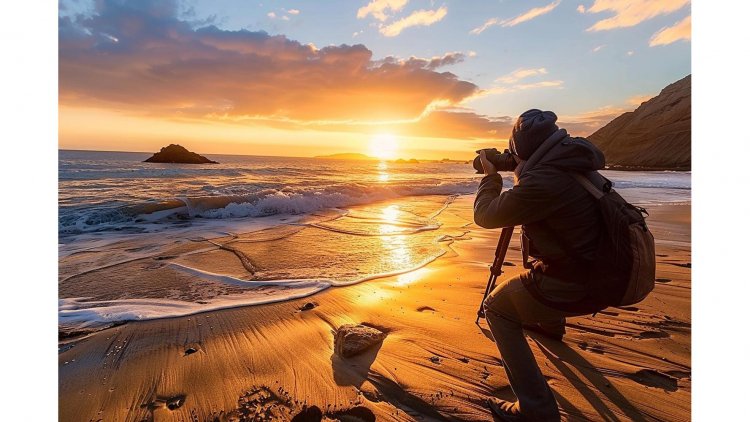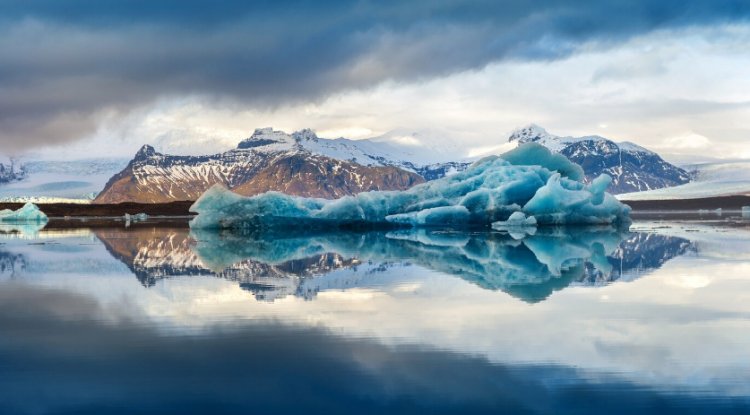Snap Like a Pro: Secrets to Capturing Stunning Travel Photos
Travel photography is more than just clicking a button; it's about capturing the essence of a place and creating memories that last a lifetime. Whether you're an amateur with a smartphone or a seasoned photographer with a DSLR, there are tried-and-true strategies to elevate your travel photos from average to extraordinary. Here are nine essential tips that will help you capture those unforgettable moments in the most visually stunning way.

Embrace the Golden Hours
The magic of golden hours—shortly after sunrise and before sunset—can transform your photos from ordinary to extraordinary. During these times, the light is softer and warmer, casting a golden hue that enhances the colors and textures in your images. This natural lighting creates long shadows and highlights, adding depth and dimension to your photos.
To make the most of golden hours, plan your shoots around these times. Set an early alarm for sunrise and be ready to capture the first light. For sunset shots, find a vantage point that offers an unobstructed view of the horizon. Remember, these moments can be fleeting, so patience and preparation are key.
Frame with Intent
Framing is a powerful technique that can dramatically enhance your travel photos. The idea is to use natural or architectural elements to create a "frame" within your image, guiding the viewer’s eye to the main subject. This technique adds depth and context to your photos, making them more engaging.
Look for doorways, windows, archways, or even branches that you can use as frames. Position yourself so that these elements surround your subject, creating a sense of enclosure. This technique not only adds visual interest but also helps in focusing the viewer's attention where you want it.
Play with Perspectives
Changing your perspective can lead to stunning results. Most people photograph from eye level, but shifting your viewpoint can reveal new angles and compositions that make your images stand out. Experiment with shooting from high above, down at ground level, or through reflections.
For instance, shooting from a low angle can make subjects appear more imposing or grand, while a bird’s-eye view can offer a fresh and unique perspective. Don’t be afraid to get creative and try unconventional angles to find what best highlights the scene you’re capturing.
Use Leading Lines
Leading lines are a compositional technique used to draw the viewer’s eye into the photograph. These lines can be natural, like rivers or roads, or man-made, like fences or pathways. They create a sense of depth and guide the viewer’s attention toward the main subject or the horizon.
When composing your shot, look for lines that lead into the scene and align them to draw attention where you want it. Ensure the lines are not too dominant but complement the overall composition. This technique can add a dynamic element to your photos, making them more visually appealing.
Capture Local Life
One of the most compelling aspects of travel photography is capturing the local culture and daily life of the places you visit. Photographs of people in their natural environment tell stories and add authenticity to your travel narrative.
Approach locals respectfully and ask if you can photograph them. Candid shots of everyday activities, market scenes, or traditional festivals can provide a glimpse into the culture and add a human element to your travel portfolio. Remember to be respectful of cultural norms and always seek permission when needed.
Mind Your Composition
Good composition is the foundation of great photography. Understanding the basics, such as the Rule of Thirds, can significantly improve your shots. The Rule of Thirds involves dividing your frame into a grid of nine equal parts and placing the key elements along these lines or their intersections.
Additionally, consider other compositional techniques like symmetry, patterns, and textures. These elements can make your photos more intriguing and balanced. Experiment with different compositions to see what best captures the scene’s essence.
Invest in the Right Gear
While smartphone cameras are remarkably advanced, having the right gear can elevate your travel photography. A good camera, lenses, and accessories can give you more control over your shots. Consider investing in a versatile lens, such as a 24-70mm zoom, which can handle a range of scenarios.
For those using smartphones, various accessories, like clip-on lenses or a portable tripod, can enhance your photography. A tripod is especially useful for low-light conditions or when shooting landscapes. Even a lightweight, compact tripod can make a significant difference.
Be Mindful of the Weather
Weather conditions can greatly affect the mood and quality of your photos. Overcast skies can create soft, diffused light, ideal for capturing details without harsh shadows. Conversely, dramatic weather, like storm clouds or fog, can add a sense of drama and atmosphere to your shots.
Check the weather forecast and plan your photography sessions accordingly. Embrace the weather conditions rather than fighting against them. For instance, a rain-soaked city street can offer unique reflections and textures that are worth capturing.
Edit Thoughtfully
Post-processing is an essential part of digital photography. Editing allows you to enhance your photos and correct any issues. Use editing software to adjust exposure, contrast, color balance, and sharpness. However, aim for subtlety—over-editing can make your photos look unnatural.
Elevate Your Travel Photos to New Heights
Capturing exceptional travel photos is as much about your approach and creativity as it is about the technical aspects of photography. By applying these travel photography tips, you’ll be able to transform your travel snapshots into stunning images that not only document your journeys but also inspire and captivate.
Explore the Unexpected
One of the joys of travel photography is discovering the unexpected. Wander off the beaten path and explore lesser-known spots. Often, the most memorable photos come from unplanned adventures and serendipitous moments. Whether it's a hidden alley in a bustling city or a quiet, picturesque corner of a well-trodden site, keep your eyes open for unique angles and moments.
Travel often means venturing into the unknown, so embrace the spontaneity. Carry your camera or smartphone with you at all times and be ready to capture fleeting scenes that might otherwise be missed. This openness to the unexpected can lead to some of your most rewarding and original photographs.
Engage with the Environment
Integrating the environment into your photography can add context and enhance the storytelling aspect of your images. Rather than isolating your subject, incorporate elements of the surrounding environment to provide a sense of place and atmosphere.
For example, if you’re photographing a landmark, consider how the surrounding landscape or urban features interact with it. A bustling street scene, a tranquil lake, or dramatic mountains can all contribute to the narrative of your photograph. Engaging with the environment means understanding how different elements work together to create a cohesive and compelling image.
Master the Art of Storytelling
Great travel photos tell a story. Think about what you want to convey with your image. Are you capturing a moment of joy, a cultural tradition, or the natural beauty of a place? A photo that tells a story will be more engaging and memorable.
Consider the context of your photos and how they fit into a broader narrative. This might mean capturing a sequence of images that together tell the story of a day’s adventure or focusing on specific details that highlight the essence of a place. Storytelling through photography involves looking beyond the obvious and seeking out the subtleties that convey a deeper meaning.
Experiment with Different Techniques
Don’t be afraid to experiment with different photographic techniques to add variety and creativity to your portfolio. Techniques such as long exposure, HDR (High Dynamic Range), and panoramic shots can produce striking results that go beyond conventional photography.
Long exposure, for instance, can capture movement and create dynamic, ethereal images, such as flowing waterfalls or bustling cityscapes. HDR can help balance high-contrast scenes, revealing details in both shadows and highlights. Panoramic shots are perfect for capturing vast landscapes or city skylines, offering a sweeping view that single-frame images might not convey.
Develop Your Personal Style
As you gain experience in travel photography, develop your personal style. This style might be reflected in your choice of subjects, compositions, color palettes, or editing techniques. Having a distinct style helps to make your photos recognizable and memorable.
Think about what draws you to certain subjects or scenes and how you can express that in your work. Your personal style will evolve over time as you experiment and refine your approach, but it’s important to stay true to what resonates with you as a photographer.
Stay Safe and Respectful
While capturing breathtaking images is important, never compromise your safety or the safety of others. Be mindful of your surroundings, especially in unfamiliar or potentially hazardous environments. Follow local guidelines and regulations, and respect private property and cultural practices.
Respect is also crucial when photographing people. Always ask for permission before taking someone’s photo, and be sensitive to their comfort and privacy. Building positive interactions and showing respect can lead to more meaningful and authentic photographs.
Optimize Your Workflow
Efficient workflow is essential, especially when you’re traveling and managing a large number of photos. Organize your files systematically and back them up regularly. Utilize cloud storage or external hard drives to keep your images safe and accessible.
Editing and curating your photos should be done thoughtfully. Select the best shots and process them in batches to streamline your workflow. Consider creating backups and organizing your photos by date, location, or subject to make them easier to find and use later.
Share and Connect
Finally, sharing your travel photos can be a rewarding way to connect with others and showcase your experiences. Utilize social media platforms, photography blogs, or online communities to share your work and engage with fellow travelers and photographers.
Sharing your photos can also provide valuable feedback and encouragement, helping you grow as a photographer. Additionally, it allows you to contribute to the collective memory of places you’ve visited, inspiring others to explore and appreciate the world through your lens.
By implementing these travel photography tips, you’ll be well-equipped to capture and create stunning images that truly reflect the beauty and essence of your travels. Remember, great photography comes from a combination of technical skill, creative vision, and a genuine connection to your subject. With practice and dedication, you can elevate your travel photos and share your adventures in a way that resonates and inspires.
Disclaimer: The travel information and recommendations on this blog are intended for general guidance and inspiration. Conditions and regulations can change quickly, so please verify all details with appropriate sources before making travel plans. We are not liable for any errors, omissions, or outcomes resulting from your use of this information. Travel involves inherent risks, and it's essential to prioritize your safety and well-being. Always travel with adequate insurance and take necessary precautions.
What's Your Reaction?





















